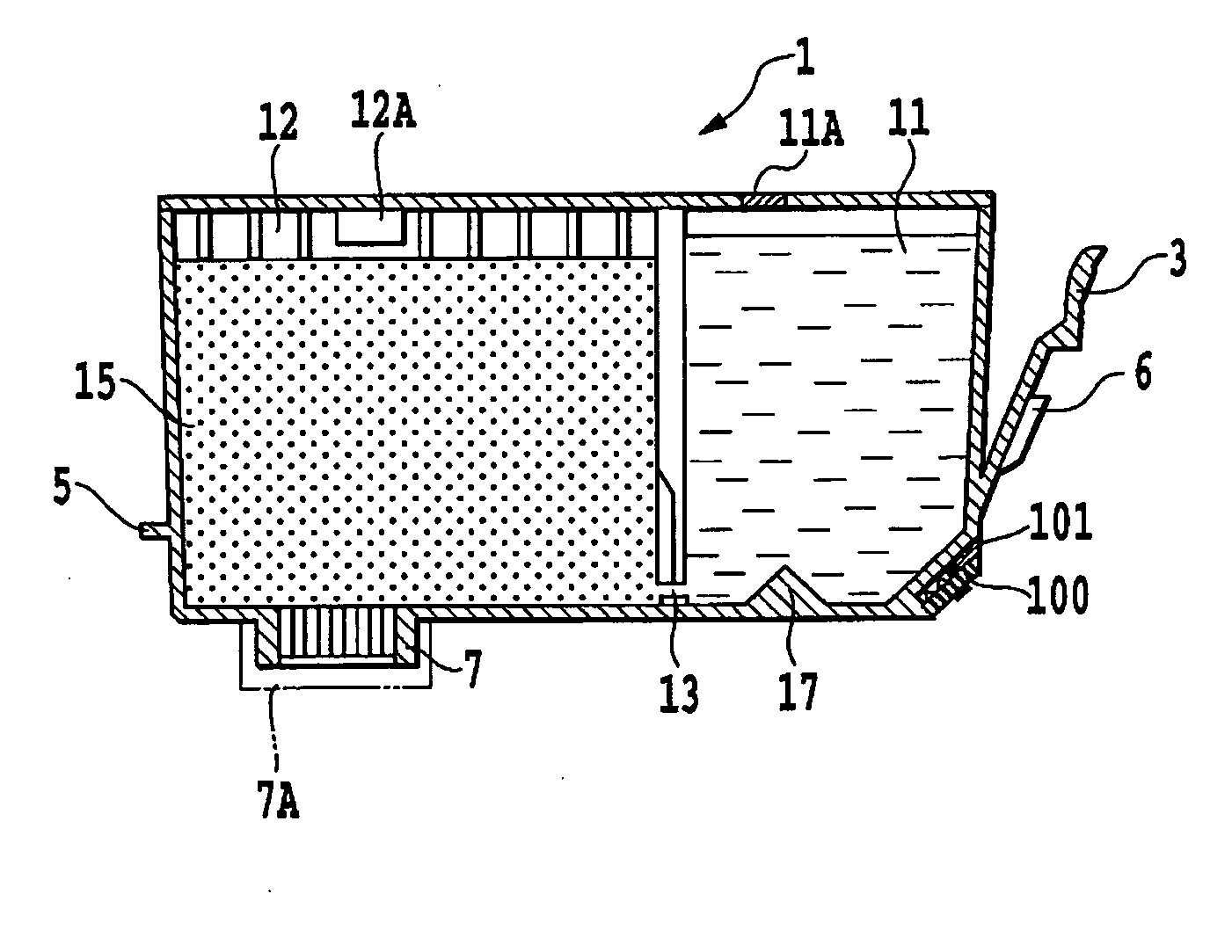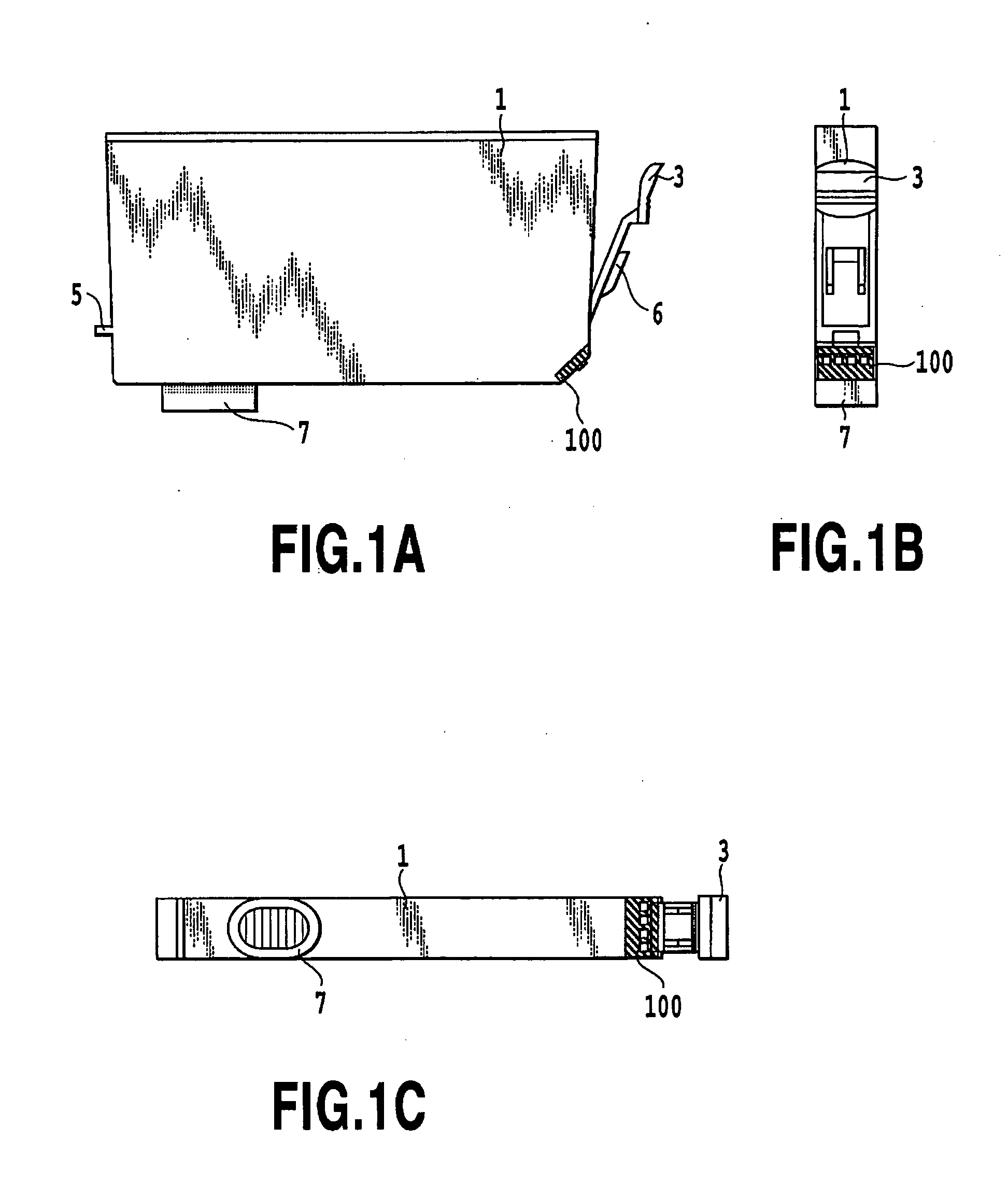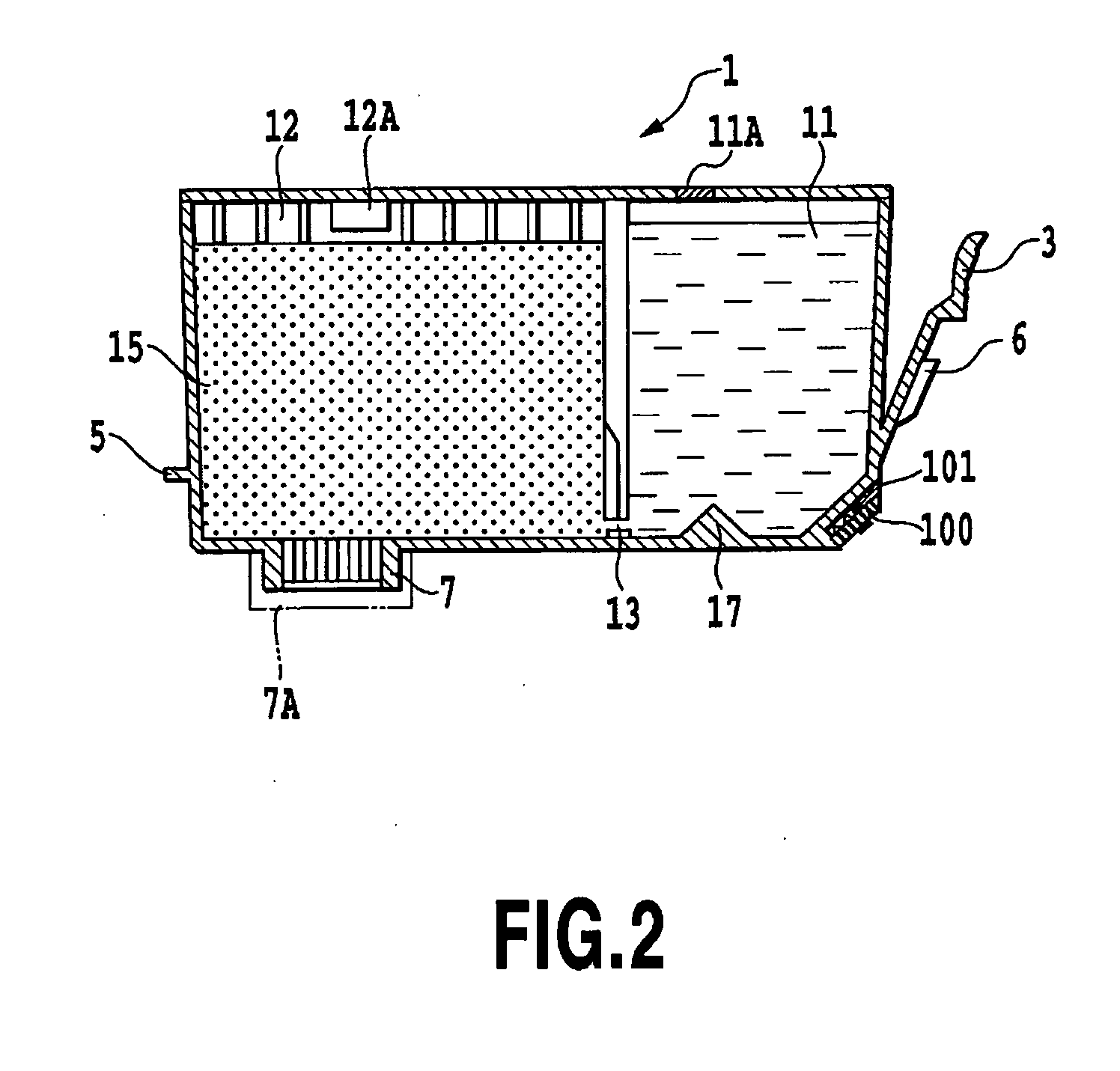Liquid container, liquid supply system and printing device using liquid container, and circuit board for liquid container
a technology for liquid containers and circuit boards, which is applied in printing, other printing apparatuses, etc., can solve the problems of destroying not only the information stored in the memory but also the memory in itself, and the ink cartridges have the disadvantage of a tremendous increase in manufacturing costs and complication, and the printing operation will be hindered
- Summary
- Abstract
- Description
- Claims
- Application Information
AI Technical Summary
Benefits of technology
Problems solved by technology
Method used
Image
Examples
first embodiment
[0121]FIG. 6 is a perspective view showing an example of a printing head unit configured to realize attachment and detachment of the ink tanks according to the Meanwhile, FIGS. 7A, 7B, and 7C are views for explaining an operation to attach the ink tanks to the printing head unit.
[0122] The printing head unit 105 generally includes the holder 150 for detachably holding a plurality (4 pieces in the drawing) of ink tanks, and the printing head 105′ (not shown in FIG. 6) to be disposed on a bottom face side. Here, an ink inlet port 107 on the printing head positioned at the bottom of the holder is connected to the ink supply port 7 on the ink tank by attaching each of the ink tanks to the holder 150. In this way, an ink communicating path is formed between the holder and the ink tank.
[0123] A component provided with an electrothermal transducer element in a fluid path constituting a nozzle can be used in the printing head 105′. This component is configured to apply thermal energy to t...
second embodiment
[0166] The timing for allowing a storage area (the register) of the volatile memory 103D to retain the information temporarily may be configured as follows. For instance, a command for transferring desired information is transmitted from the control circuit 300 on the body to the input and output control circuit 103A as appropriate (when opening the cover of the printing apparatus, for example), and the command can be used as a trigger. Alternatively, as shown in the drawing, timing generated by a power-on-reset circuit (POR) 103E that responds to the time when the device is turned on is used for generating a trigger for causing the input and out put control circuit 103A to transfer the desired information from a non-volatile area to a volatile area in conformity therewith. The latter example will be described in detail in a
[0167] Here, when the information supposed to be stored temporarily is gathered in a specific address in the non-volatile memory 103B, it is possible to latch th...
second embodiment (
3. Second Embodiment (FIGS. 25 to 27)
[0216] Destruction of the content stored in the memory element and the memory element in itself due to hot-swap can be effectively prevented by the above-described embodiments. Moreover, the number of memory access can be reduced even in the case of using a non-volatile memory which has a limitation in the number of access. Accordingly, it is possible to extend the lifetime of the non-volatile memory and thereby to utilize reliable information for a long time period.
[0217] The next embodiment intends to further reduce the number of access to a non-volatile memory while utilizing the advantages attributed to the basic configuration of the first embodiment. Moreover, this embodiment is configured to read ink residual quantity at the time of attaching an ink tank and to perform display in response thereto. In addition, this embodiment is configured to recover data in the event of destruction of the data such as the ink residual quantity stored in a...
PUM
 Login to View More
Login to View More Abstract
Description
Claims
Application Information
 Login to View More
Login to View More - R&D
- Intellectual Property
- Life Sciences
- Materials
- Tech Scout
- Unparalleled Data Quality
- Higher Quality Content
- 60% Fewer Hallucinations
Browse by: Latest US Patents, China's latest patents, Technical Efficacy Thesaurus, Application Domain, Technology Topic, Popular Technical Reports.
© 2025 PatSnap. All rights reserved.Legal|Privacy policy|Modern Slavery Act Transparency Statement|Sitemap|About US| Contact US: help@patsnap.com



